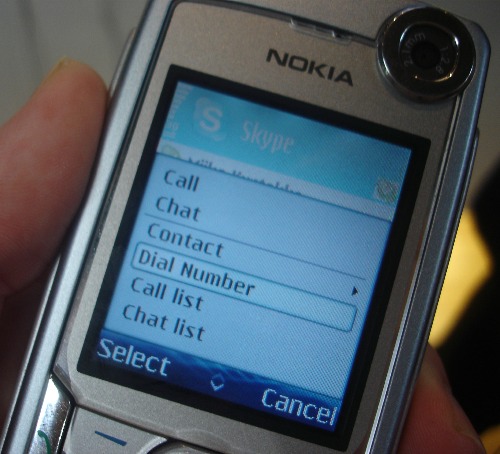Possibilities
We see 3 scenarios for a GoogleOS:
- A web based desktop (i.e. operating system)
- A full featured Linux distribution
- A lightweight Linux distro and/or BIOS
We'll try to explain each of these in detail - then in the conclusion, make our prediction. What's more, we think this could be less than 6 months away from happening.
A Web Based Operating System
If you asked "what will a GoogleOS look like?" - most people would answer that it'll be an AJAX-powered copy of the Windows desktop. In other words, a WebOS (aka webtop). To remind you of what a WebOS is, it is basically a virtual desktop on the web and has various built-in applications. Google already has a history of producing web-based products that mimic desktop apps - Gmail was the first desktop client like email reader, and now they have Google Docs & Spreadsheets, Google Calendar and other desktop-like products. Also note that Google's internal open sourced widget toolset, GWT, allows them to replicate any desktop capability.
On the other hand, a bunch of startups like YouOS , Goowy, DesktopTwo, Xin and open source eyeOS are already tackling this exact problem - and have been for a while now. So if Google engineers are not already working on their own webOS project, they may want to snap up one of these! AJAX powered YouOS, which is a yet another Paul Graham investment, seems like the most obvious choice at this time.

Screenshot from YouOS
Besides the startups we've already mentioned, there may be other surprises that Google looks at for WebOS purposes. Meebo, for instance, has created a very large user base with their web-based meta instant messaging product (it enables you to use multiple IM services on the same webpage). IM is a crucial application, because many people spend a lot of time on the computer IM'ing. So Meebo could use IM as a base - and utilize the empty spaces on their page for new applications.

Meebo OS with fictional Calculator application (taken from YouOS)
30 Boxes also has a webtop offering, but it looks less promising than their calendar. Start pages like NetVibes, PageFlakes and WebWag could also potentially enter the webos business.
A Full Featured Linux Distro
Another possibility for Google is to create their own Linux-based operating system. The free license of Linux allows anyone to create their own version of Linux. Although Linux is the most popular operating system in the server market and it's free, it is still far behind Windows and MacOS in the desktop market. Some believe this may change with the latest enhancements to the Linux user interface.
This scenario is a more traditional model to replace Windows - with a direct competitor, instead of creating a web-based replacement. Indeed this has already been widely speculated - Ubuntu, a semi-free Linux derivative, was rumored to be acquired by Google.
If this scenario happened, Google may open up their operating system as a free download and promote it on their homepage - as they once did with Firefox. They could also make a networked file system the default, instead of the complex UNIX file hierarchy of Linux - which is another reason why Linux struggles in the mainstream desktop market.
A Lightweight Linux Distro or BIOS
A lightweight Linux distro is a possibility. For example an OS that simply booted up the computer, connected to the internet, and then opened Firefox. Then leave the rest to Google's web sites and apps. This is possibly the most logical strategy, because Google could then create a homepage that connects all their services and applications - and people will have the freedom to use other web sites and services as well.
Similar concepts already exist. For instance, Puppy and Damn Small are 2 credit card sized Linux distros. The good thing about these is that you can carry them everywhere you go - putting the credit card sized CD or the USB drive into your pocket and using your own operating system anywhere you go. Why? Because these distributions don't need to be installed and can work directly from the CD or the USB drive.
ByzantineOS, a dead project now, was doing exactly this. Its sole purpose was to boot up and open a Mozilla based window manager - but then you could not get out of your browser window!

A screenshot of ByzantineOS, showing the user stuck inside the browser
However, Google may be considering an even more radical solution and planning to replace BIOS with their own version. BIOS means 'basic input/output system' and it is the built-in software that determines what a computer can do - for example it controls the keyboard and display screen. Google's latest sponsorship of LinuxBIOS may be a step towards researching this. In that case, Google could agree with hardware vendors to pre-install Google's BIOS-based operating system.
Conclusion: GoogleOS will tackle Microsoft's Vista OS head on
We believe that everything will become much clearer in the following 6 months. Microsoft will put pressure on Google with its Vista OS, which will receive relatively high adoption just like any other new Windows release (although probably not as high as historically Microsoft has enjoyed!). As Vista's adoption increases, so will the adoption of its default search engine Live Search. From Microsoft's perspective, this will have a positive effect on all Live and MSN sites. What end users are looking for is ease-of-use and satisfactory experiences - which in a lot of cases starts from the Vista OS.
In that scenario, Google's usage rates may be negatively affected. So we predict at that point, Google will start a more punchy strategy - pushing Firefox and some form of Google OS. Yahoo! has already responded to the Microsoft threat in a friendly fashion, by offering a customized IE7 for its users. But we think Google will be more aggressive and competitive and will push their own OS. The GoogleOS may be a reality within 6 months!
Credit: Written by Emre Sokullu and edited by Richard MacManus.




















